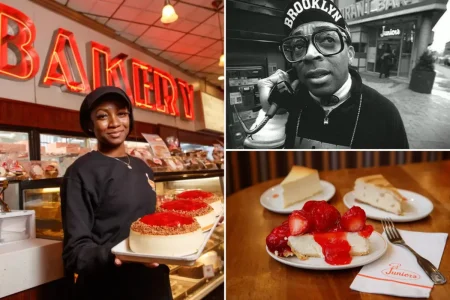Finding Comfort in a Cocktail: America’s Best Airports for a Drink During Your Layover
In an age where air travel can be increasingly stressful, particularly amid challenges like FAA disruptions during government shutdowns, many travelers find themselves seeking solace in airport bars and restaurants. A comprehensive study by Upgraded Points has recently mapped out which U.S. airports offer the best drinking experiences for weary travelers, analyzing fifty major hubs based on three critical factors: the concentration of alcohol-serving venues per square mile, their accessibility relative to passenger volume, and the quality of these establishments as reflected in their Google Reviews ratings.
Boston’s Logan International Airport (BOS) emerges as the champion of airport drinking experiences, scoring an impressive 75.1 points out of a possible 100. What makes Logan stand out is its exceptional bar density—offering 10.2 alcohol-serving venues per square mile, which exceeds the national average by 116%. This remarkable concentration means travelers passing through Boston can easily find a watering hole to unwind without having to embark on a terminal-wide expedition. The quality of these establishments also ranks above average, making Logan not just abundant in options but also satisfying in experience. This balance of quantity and quality creates an ideal environment for travelers looking to make the most of their layover time with a quality drink in hand.
The runners-up showcase diverse strengths in creating positive drinking environments. Nashville International Airport (BNA) claims second place with 72.4 points, boasting a bar-to-passenger ratio that exceeds the average by 76%—a fitting tribute to Music City’s celebrated drinking culture. Kansas City International Airport (MCI) takes third place with 68.6 points, distinguished by having the highest Google ratings for its alcohol-serving venues (4.16 out of 5 stars) and leading in bar accessibility with 5.6 venues per 10,000 passengers. Ronald Reagan Washington National Airport (DCA) and Louis Armstrong New Orleans International Airport (MSY) complete the top five, with DCA offering nearly triple the average bar density and New Orleans’ airport reflecting the city’s reputation for hospitality with highly-rated drinking establishments.
New York City presents a fascinating study in contrasts within this ranking. LaGuardia Airport (LGA), beneficiary of an almost $8 billion renovation project, secured ninth place in the overall ranking but claimed the top position for bars per square mile with an astounding 20.4 venues. The airport’s relatively compact footprint intensifies this concentration, creating what researchers described as “one of the most bar-saturated airports in the country.” This transformation represents a remarkable turnaround for an airport once notorious for its dated facilities and limited amenities. Today’s LaGuardia offers travelers sophisticated wine bars and pubs integrated into its modernized terminals, making it a surprising haven for those with time to spare before their flights.
In stark contrast to LaGuardia’s success story, New York’s other major airports—John F. Kennedy International Airport (JFK) and Newark Liberty International Airport (EWR)—ranked among the study’s five worst airports for drinking experiences, placing 46th and 47th respectively. Despite JFK’s status as one of the world’s busiest international gateways, researchers found its drinking scene “surprisingly underwhelming,” citing long distances between venues and challenging navigation through crowded terminals as significant deterrents to enjoying a relaxed drink. Newark fared even worse, receiving the study’s lowest average star rating for its alcohol-serving establishments at a disappointing 2.84 stars. This striking disparity between New York’s three major airports highlights how infrastructure investment and thoughtful design can dramatically impact the traveler experience, even within the same metropolitan area.
Beyond the extremes of excellence and disappointment, the study reveals interesting patterns across American airports. Minneapolis-Saint Paul, San Diego, Philadelphia, and Las Vegas round out the top ten, each offering unique strengths in their approach to airport drinking. At the other end of the spectrum, Honolulu’s Daniel K. Inouye International Airport ranked dead last with just 20.8 points, followed closely by Oakland, Southwest Florida International, and the previously mentioned New York laggards. These findings suggest that airport size doesn’t necessarily correlate with quality drinking experiences—some of America’s busiest hubs struggle in this category, while smaller regional airports sometimes excel by focusing on quality and accessibility. For travelers who view airport drinks as an essential part of their journey rather than just a way to pass time, this research provides valuable guidance on where they might find the most satisfying layover experience, transforming what could be tedious waiting time into an enjoyable part of the travel adventure.















